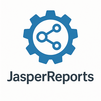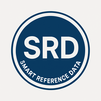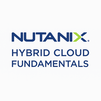
The Data Analytics with Python course offers comprehensive training in using Python for data analysis, visualization, and predictive modeling. Learners will master core tools such as Pandas, NumPy, Matplotlib, and Seaborn, along with foundational statistics and machine learning techniques. Designed for data enthusiasts and professionals, the course provides real-world case studies and projects, enabling participants to extract insights, solve business problems, and build a strong analytics portfolio.
Data Analytics with Python Training Interview Questions Answers - For Intermediate
1. What are the key differences between NumPy arrays and Python lists in data analysis?
NumPy arrays are more efficient than Python lists for numerical operations. Arrays consume less memory, are faster due to optimized C-based implementations, and support vectorized operations, which allow entire datasets to be processed without explicit loops. Unlike Python lists, NumPy arrays enforce homogeneity, meaning all elements must be of the same type, which improves performance in data analytics tasks.
2. What is data normalization and when should it be used?
Data normalization is the process of rescaling features to fall within a similar range, usually between 0 and 1. It's particularly useful when variables have different units or magnitudes, as it ensures that each feature contributes equally to the analysis. Normalization is essential for algorithms like k-NN and neural networks that are sensitive to scale.
3. How do you interpret a correlation matrix in Python analytics?
A correlation matrix displays the pairwise correlation coefficients between variables in a dataset. Values close to 1 or -1 indicate strong positive or negative relationships, respectively, while values near 0 imply weak or no correlation. It helps in identifying redundant features, potential multicollinearity, and selecting variables for predictive models.
4. What is the purpose of EDA (Exploratory Data Analysis)?
EDA is the initial step in data analysis used to summarize, visualize, and understand the structure of the dataset. It helps in uncovering patterns, spotting anomalies, checking assumptions, and forming hypotheses. EDA guides further data preprocessing and model selection by providing key insights into variable relationships and distributions.
5. What is the difference between filtering and masking in Pandas?
Filtering refers to selecting data based on certain conditions, while masking involves using Boolean arrays to hide or reveal specific values. Though they serve similar purposes, filtering usually returns a subset of the data, whereas masking retains the original structure but modifies visibility or content based on conditions.
6. What is the significance of data type conversion in Pandas?
Data type conversion ensures that each column has the appropriate data type, which improves memory usage and computation speed. For example, converting a float column to an integer or an object column to a category type can save resources and optimize performance, especially when working with large datasets.
7. How do you assess the quality of a dataset?
Dataset quality is evaluated by checking for missing values, duplicate entries, inconsistent formatting, and outliers. You also examine data accuracy, completeness, and relevance to the problem at hand. High-quality data should be clean, well-structured, and representative of the real-world scenario being analyzed.
8. What is the difference between count() and value_counts() in Pandas?
The count() function returns the number of non-null entries in each column, helping assess data completeness. In contrast, value_counts() gives the frequency of unique values in a column, which is useful for understanding categorical distributions and detecting class imbalances in the data.
9. Why is reshaping data important in analytics?
Reshaping data enables analysts to restructure datasets for compatibility with analytical models or visualization tools. It involves converting data from wide to long format or vice versa, and pivoting or stacking/unstacking operations. Proper reshaping ensures that data aligns with the expected input structure of downstream processes.
10. What is data binning and why is it useful?
Data binning involves grouping continuous variables into intervals or "bins." This technique helps reduce noise and highlight patterns in the data. It is particularly useful for creating histograms, handling skewed distributions, or preparing data for models that prefer categorical inputs, like decision trees.
11. What is the difference between absolute and relative error in data analytics?
Absolute error measures the direct difference between observed and actual values, while relative error expresses this difference as a percentage of the actual value. Absolute error provides raw error magnitude, whereas relative error allows comparison across different scales or units, making it more interpretable in many contexts.
12. How do you validate the accuracy of a dataset after cleaning?
Validation can be done by cross-checking with trusted sources, verifying summary statistics, and performing visual inspections like histograms and scatter plots. It's also useful to perform logical tests to ensure relationships between fields make sense (e.g., dates follow chronological order, totals match breakdowns).
13. What is dimensionality reduction and when is it needed?
Dimensionality reduction reduces the number of variables or features in a dataset while retaining essential information. It is used when high-dimensional data leads to overfitting, increased computation time, or difficulty in visualization. Techniques like PCA help improve model performance and simplify data interpretation.
14. How is skewness in data identified and handled?
Skewness indicates asymmetry in a data distribution. It can be identified through summary statistics or visualized using histograms and box plots. Right-skewed data has a long tail on the right, and left-skewed data on the left. Transformation techniques like log, square root, or Box-Cox can correct skewness to make data more suitable for analysis.
15. What are some best practices for documenting your data analysis process?
Best practices include keeping a clear record of all steps taken, from data collection to preprocessing, analysis, and interpretation. Use markdown cells in notebooks for descriptions, maintain version control, and store original and cleaned data separately. Proper documentation ensures reproducibility, transparency, and ease of collaboration.
Data Analytics with Python Training Interview Questions Answers - For Advanced
1. What are the challenges of handling time zone-aware data in Python, and how can they be addressed in analytics workflows?
Handling time zone-aware data in Python poses challenges in maintaining consistency, performing accurate time-based calculations, and ensuring interoperability across systems. Time zone inconsistencies can lead to flawed aggregations, especially when analyzing across regions or daylight saving time transitions. In Python, the datetime objects can be either naive (without timezone info) or aware (with timezone). It is essential to standardize data using a consistent time zone, typically UTC, and then convert to local time zones only for display or region-specific operations. Pandas supports time zone conversion and alignment, which helps in normalizing timestamps. The complexity increases when merging data from multiple sources, as each may store or interpret time differently. Robust time zone handling improves the reliability of time series analyses, forecasting, and event tracking.
2. How do you conduct root cause analysis using Python in a large dataset with mixed data types?
Root cause analysis (RCA) in a large, mixed-type dataset involves identifying the fundamental reasons behind anomalies, trends, or performance issues. In Python, this typically starts with exploratory data analysis to uncover irregular patterns or outliers across numeric, categorical, and temporal variables. Correlation matrices, group-wise aggregations, and clustering can reveal variable relationships, while statistical hypothesis testing helps confirm significance. For categorical variables, cross-tabulations and chi-squared tests are insightful. An RCA process must also account for confounding variables, which can distort findings. Advanced users might apply decision trees or SHAP value analysis to identify the most influential features contributing to a target event or deviation. By combining domain knowledge with rigorous statistical and machine learning techniques, RCA in Python leads to actionable insights grounded in data.
3. What are the best strategies for optimizing memory usage in Pandas when working with high-volume datasets?
Optimizing memory usage in Pandas is crucial when working with high-volume datasets to prevent system crashes and enhance processing speed. One key strategy is to explicitly set appropriate data types; for example, using category for low-cardinality text fields or choosing smaller numeric types like int8 instead of int64 when applicable. Dropping unnecessary columns early in the pipeline, parsing only required rows during initial data load, and avoiding duplicated data structures also help. Chunking the data during loading and processing operations enables scalability for machines with limited memory. Compression formats like Parquet or Feather provide efficient on-disk storage and fast reads. These optimization techniques ensure that Pandas remains responsive and efficient even under demanding data conditions.
4. What is the importance of reproducibility and version control in data analytics projects using Python?
Reproducibility ensures that data analysis can be independently verified and repeated, which is critical for scientific integrity, collaboration, and regulatory compliance. In Python-based analytics projects, reproducibility requires fixing random seeds, capturing dependencies in a requirements.txt or environment file, and versioning both the code and datasets. Version control tools like Git facilitate tracking changes, enabling teams to collaborate without overwriting work. Reproducible notebooks, scripts, and pipelines ensure that future analysts can re-run and verify outcomes even months or years later. This not only fosters transparency and trust but also accelerates debugging, onboarding, and transition of projects across teams or stakeholders.
5. Explain the impact of high cardinality in categorical features and how it should be managed in analytics models.
High cardinality occurs when a categorical variable contains a large number of unique values, such as user IDs or product SKUs. This can lead to challenges in modeling, particularly with encoding methods like one-hot encoding, which can result in high-dimensional and sparse matrices that degrade model performance and increase computational complexity. To manage this, techniques such as frequency encoding, target encoding, or dimensionality reduction (e.g., embedding layers in deep learning models) are used. In Python, libraries like CategoryEncoders provide these transformations. Reducing cardinality not only improves efficiency but also enhances generalization by avoiding overfitting to rare categories.
6. How would you perform anomaly detection in a multivariate time series dataset using Python?
Anomaly detection in multivariate time series requires understanding the temporal and inter-variable dependencies. The process begins with normalization and alignment of all series, followed by visual exploration to detect non-obvious anomalies. Statistical methods like the Mahalanobis distance can capture anomalies based on the distribution of multivariate data. For more complex cases, machine learning models such as autoencoders or recurrent neural networks (RNNs) are employed to learn normal behavior and flag deviations. Dimensionality reduction techniques like PCA can also help visualize and isolate outlier points in lower-dimensional space. Python libraries such as PyOD, TSlearn, and Darts provide robust tools for implementing and evaluating anomaly detection strategies on time series data.
7. What role does Bayesian inference play in data analytics, and how is it applied using Python?
Bayesian inference provides a probabilistic framework that updates the likelihood of hypotheses as new data becomes available, making it well-suited for uncertain and dynamic environments. Unlike frequentist methods, which rely on point estimates, Bayesian approaches generate distributions, enabling richer insights and decision-making under uncertainty. In Python, Bayesian methods are implemented using libraries like PyMC3 or Pyro, which support probabilistic programming. Applications include A/B testing, time series forecasting, and model calibration. The Bayesian framework also allows incorporation of prior knowledge, which is particularly beneficial in domains where data is scarce or expensive to collect.
8. How do you structure a Python analytics project to ensure scalability and maintainability?
A well-structured Python analytics project separates concerns into modular, reusable components—data loading, preprocessing, modeling, and visualization. Using a directory layout with src, notebooks, tests, and config folders enhances readability and navigation. Configuration management via YAML or JSON files allows parameterization without hardcoding. Logging is essential for debugging and performance monitoring, and unit testing ensures reliability. Tools like cookiecutter templates or MLflow further streamline development and experimentation. By adopting such practices, the project becomes scalable, easy to maintain, and transferable across teams and environments.
9. What are the considerations for deploying Python-based data analytics solutions into production environments?
Deploying Python analytics into production requires considerations across scalability, performance, security, and reliability. Data preprocessing scripts and models must be modularized and wrapped into APIs using frameworks like FastAPI or Flask. Dependency management and virtual environments ensure consistent execution. Containerization using Docker allows platform-independent deployment, while scheduling tools like Airflow automate workflows. It is crucial to monitor pipeline health through logging and alerting systems and to include data validation steps to detect schema changes or anomalies. A CI/CD pipeline can automate testing and deployment, ensuring robust and seamless updates to production systems.
10. Describe how causal inference differs from correlation analysis in Python data analytics.
Causal inference seeks to determine cause-and-effect relationships, whereas correlation analysis only reveals statistical associations between variables. Correlation does not imply causation, as hidden confounders may influence both variables. Causal inference requires more rigorous frameworks such as randomized controlled trials, propensity score matching, or structural causal models. In Python, libraries like DoWhy and EconML are designed to estimate causal effects using observational data. Proper causal analysis allows businesses to make strategic decisions based on expected outcomes of interventions rather than merely observing associations, thus adding substantial value over traditional analytics.
11. How do you evaluate the business impact of a data analytics model built in Python?
Evaluating business impact requires aligning the model's outputs with key performance indicators (KPIs) and assessing its influence on decision-making and operational efficiency. After validating the technical performance using accuracy, precision, or AUC, analysts should measure real-world outcomes such as cost savings, revenue growth, or customer retention. This often involves controlled testing environments like A/B tests or backtesting. Additionally, stakeholder feedback and user adoption are critical to understanding value delivery. Python enables this through dashboards, simulation environments, and reporting tools that translate analytical outputs into actionable insights for business teams.
12. What are the implications of data leakage in analytics, and how can it be prevented in Python workflows?
Data leakage occurs when information from outside the training dataset is used to create the model, leading to artificially high performance during training but poor generalization in production. It can happen subtly, such as using future data in time series forecasting or including target-derived features. To prevent leakage, proper train-test splits, time-based validation, and pipeline isolation during preprocessing are essential. In Python, frameworks like Scikit-learn pipelines help enforce data integrity by encapsulating transformations and model training, ensuring operations are performed only on training data and not leaked into validation sets.
13. What role does data governance play in enterprise Python analytics applications?
Data governance ensures that data is accurate, secure, compliant, and used responsibly. In Python analytics, this means implementing access control, audit trails, and lineage tracking. It involves enforcing data quality checks, maintaining metadata, and complying with regulations like GDPR or HIPAA. Enterprise data governance tools may integrate with Python scripts via APIs or data catalogs. In regulated industries, reproducibility, traceability, and validation become legal and operational necessities, making governance not just a best practice but a foundational requirement for scalable and ethical analytics deployment.
14. How can ensemble methods be used in analytics projects, and what are their advantages?t
Ensemble methods combine predictions from multiple models to improve overall performance and reduce variance or bias. Techniques such as bagging, boosting, and stacking allow analysts to harness the strengths of different algorithms. In Python, ensemble learning is extensively supported by Scikit-learn, XGBoost, and LightGBM. These methods often yield superior results in competitive environments like Kaggle. Ensembles enhance model robustness, particularly when dealing with complex, noisy, or high-dimensional data. However, they may reduce interpretability, so their use should be weighed against transparency requirements in critical applications.
15. How do you use unsupervised learning techniques for data exploration in analytics?
Unsupervised learning techniques such as clustering, dimensionality reduction, and association rule mining help uncover hidden patterns in unlabeled data. These methods are valuable during the exploratory phase to segment customers, reduce feature space, or identify natural groupings. For example, K-means or DBSCAN can be used to segment datasets, while PCA or t-SNE reduce dimensions for visualization. In Python, Scikit-learn and UMAP provide versatile tools for unsupervised tasks. These techniques provide structure and insight in the absence of a target variable, guiding subsequent modeling or business strategy decisions.
Course Schedule
| Jan, 2026 | Weekdays | Mon-Fri | Enquire Now |
| Weekend | Sat-Sun | Enquire Now | |
| Feb, 2026 | Weekdays | Mon-Fri | Enquire Now |
| Weekend | Sat-Sun | Enquire Now |
Related Courses
Related Articles
- How SAP Analytics Cloud Empowers Remote & Mobile Teams with Live Dashboards
- Enhance Your Skills with PDMS Software Certification Course
- CBAP - Most Trending Interview Questions & Answers
- Why Companies Trust SailPoint IdentityIQ Implementation and Developer for Identity Management
- How to Learn Advanced Ethical Hacking Online?
Related Interview
Related FAQ's
- Instructor-led Live Online Interactive Training
- Project Based Customized Learning
- Fast Track Training Program
- Self-paced learning
- In one-on-one training, you have the flexibility to choose the days, timings, and duration according to your preferences.
- We create a personalized training calendar based on your chosen schedule.
- Complete Live Online Interactive Training of the Course
- After Training Recorded Videos
- Session-wise Learning Material and notes for lifetime
- Practical & Assignments exercises
- Global Course Completion Certificate
- 24x7 after Training Support














 Join our Live Instructor-Led online classes delivered by industry experts
Join our Live Instructor-Led online classes delivered by industry experts